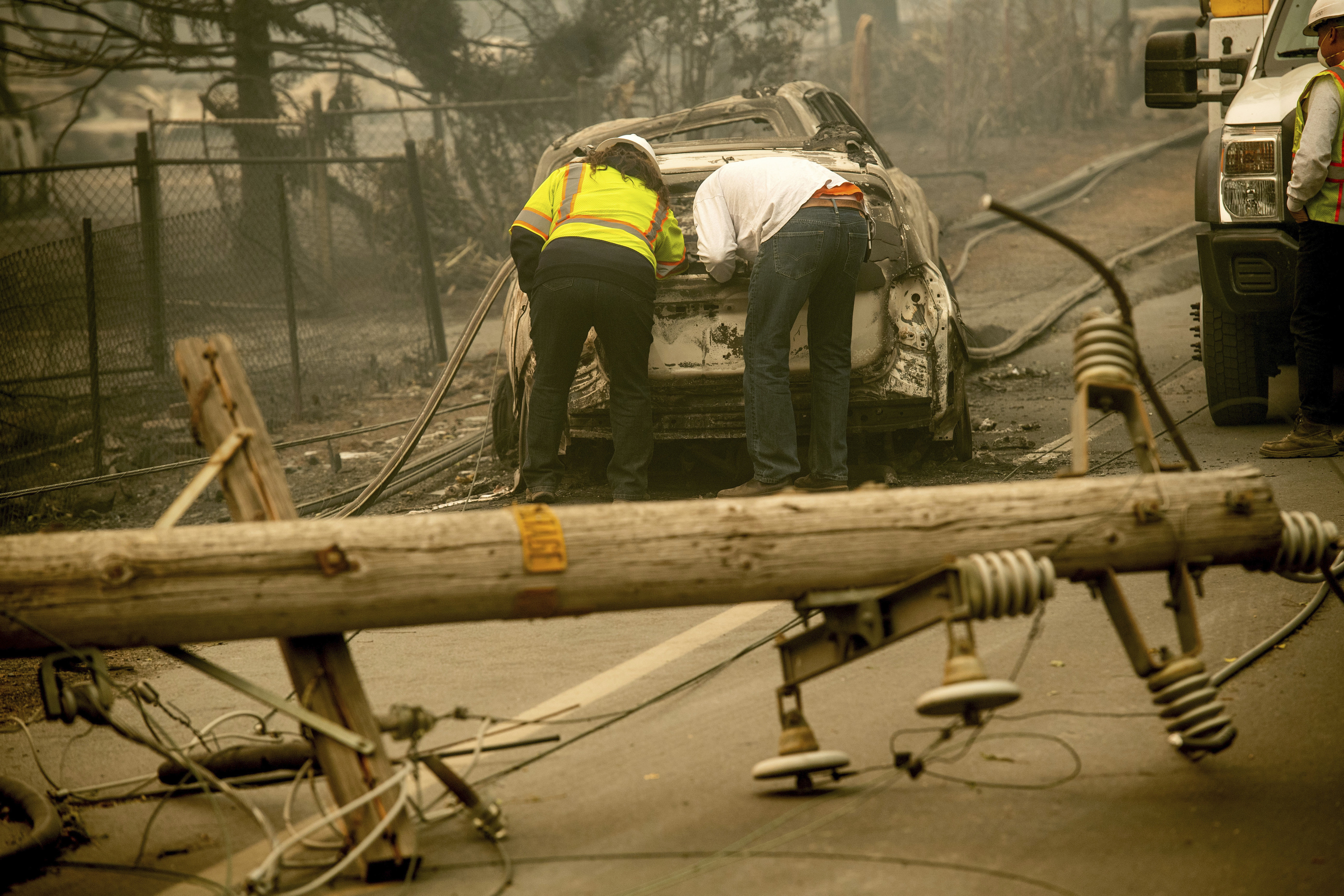
California governor, lawmakers confront utility bankruptcy
SACRAMENTO, Calif. (AP) — The announcement by the nation’s largest utility that it is filing for bankruptcy puts Pacific Gas & Electric Co.’s problems squarely in the hands of Gov. Gavin Newsom and state lawmakers, who now must try to keep ratepayer costs down, ensure wildfire victims get the money they’re owed and rethink California’s energy picture in the face of climate change.
“This issue is all about three fundamental things: It is about safety, it’s about reliability and it’s about affordability,” Newsom told reporters Monday afternoon after spending the day in and out of meetings with lawmakers about the pending bankruptcy.
Earlier in the day, PG&E announced it will file for Chapter 11 bankruptcy as it faces at least $30 billion in potential damages from lawsuits over catastrophic California wildfires in 2017 and 2018 that killed scores of people and destroyed thousands of homes. The announcement kicked off a 15-day window before the official filing. Newsom said he’d like to stave off the bankruptcy but it may not be possible.
“We’d like to see it avoided but we’re not naive,” he said. “I respect the taxpayer, I respect the ratepayer and I’m absolutely cognizant of those that lost their homes.”
The filing would not make the lawsuits disappear, but would result in all wildfire claims being consolidated into a single proceeding before a bankruptcy judge, not a jury. That could shield the company from excessive jury verdicts and buy time by putting a hold on the claims.
“The chances of victims getting what they would’ve gotten without a bankruptcy are not good,” said state Sen. Bill Dodd, a Napa Democrat.
How much and what the state can do remains to be seen. Lawmakers last year tried to prevent a threatened PG&E bankruptcy resulting from the 2017 fires by letting the utility pass on some of its costs to ratepayers, a move some critics dubbed a “bailout” for the utility. Democratic Assemblyman Chris Holden had considering introducing a similar bill that would pass on the costs of 2018 fires, but said Monday he’s backed off that idea.
“Clearly PG&E has made a decision that the legislative arena is not where they feel they’re going to get the kind of results that will go far enough,” he said, adding that the decisions about PG&E’s future now appear to be in the hands of bankruptcy court.
PG&E services about 40 percent of California’s utility customers, Newsom said, making it the nation’s largest utility. It operates in three-quarters of California’s land most vulnerable to wildfires, Newsom said. While PG&E’s equipment has been named the cause of multiple recent fires, experts blame climate change for extending California’s wildfire season and making blazes more deadly and destructive.
State officials are investigating whether the utility’s equipment sparked the deadliest, most destructive wildfire in California history, a November blaze that killed at least 86 people and burned down 15,000 homes.
Newsom and legislative leaders carefully avoided laying out potential solutions in the hours after the bankruptcy announcement while stressing the importance of ensuring wildfire victims get the money they are owed. But no one has yet figured out the future of California energy policy as the state faces increasing threats — and more wildfires — as it copes with climate change.
Democratic Sen. Jerry Hill, meanwhile, said a PG&E bankruptcy may turn out to be a good thing. Hill represents San Bruno in the San Francisco Bay Area, where a PG&E natural gas pipeline exploded in 2010 and killed eight people.
“This company has been dishonest, it has prioritized profits way over safety and there has been no effort on their part to change that,” he said. “I don’t believe it will change unless there is some sort of restructure.”
Newsom agreed PG&E hasn’t been a “trusted actor” in the past but said the state must work collaboratively with the utility. He noted that a portion of the utility’s leadership is gone, including chief executive Geisha Williams, who resigned on Sunday with a $2.5 million severance package.
Chapter 11 reorganization represents “the only viable option to address the company’s responsibilities to its stakeholders,” Richard Kelly, chairman of PG&E’s board of directors, said in a statement.
“The Chapter 11 process allows us to work with these many constituents in one court-supervised forum to comprehensively address our potential liabilities and to implement appropriate changes.”
Regardless of the solution, the process is likely to be long: 18 years after the company’s last bankruptcy filing, PG&E customers still see a small fee on their monthly bills to pay for it, labeled the “energy cost recovery amount.”
The Natural Resources Defense Council warned that bankruptcy could threaten billions in funding for PG&E’s clean energy initiatives, which are key to California’s environmental goals. PG&E is the state’s largest investor in energy efficiency and electric vehicle infrastructure, said the NRDC’s Ralph Cavanagh.
The bankruptcy is different from PG&E’s bankruptcy in 2001, when California faced an energy crisis that caused power outages. Newsom said the state has an “abundance” of energy and power shutoffs are not imminent.
___
Har reported from San Francisco. Associated Press writer Cathy Bussewitz New York contributed.
The Western Journal has not reviewed this Associated Press story prior to publication. Therefore, it may contain editorial bias or may in some other way not meet our normal editorial standards. It is provided to our readers as a service from The Western Journal.
Truth and Accuracy
We are committed to truth and accuracy in all of our journalism. Read our editorial standards.
Advertise with The Western Journal and reach millions of highly engaged readers, while supporting our work. Advertise Today.












